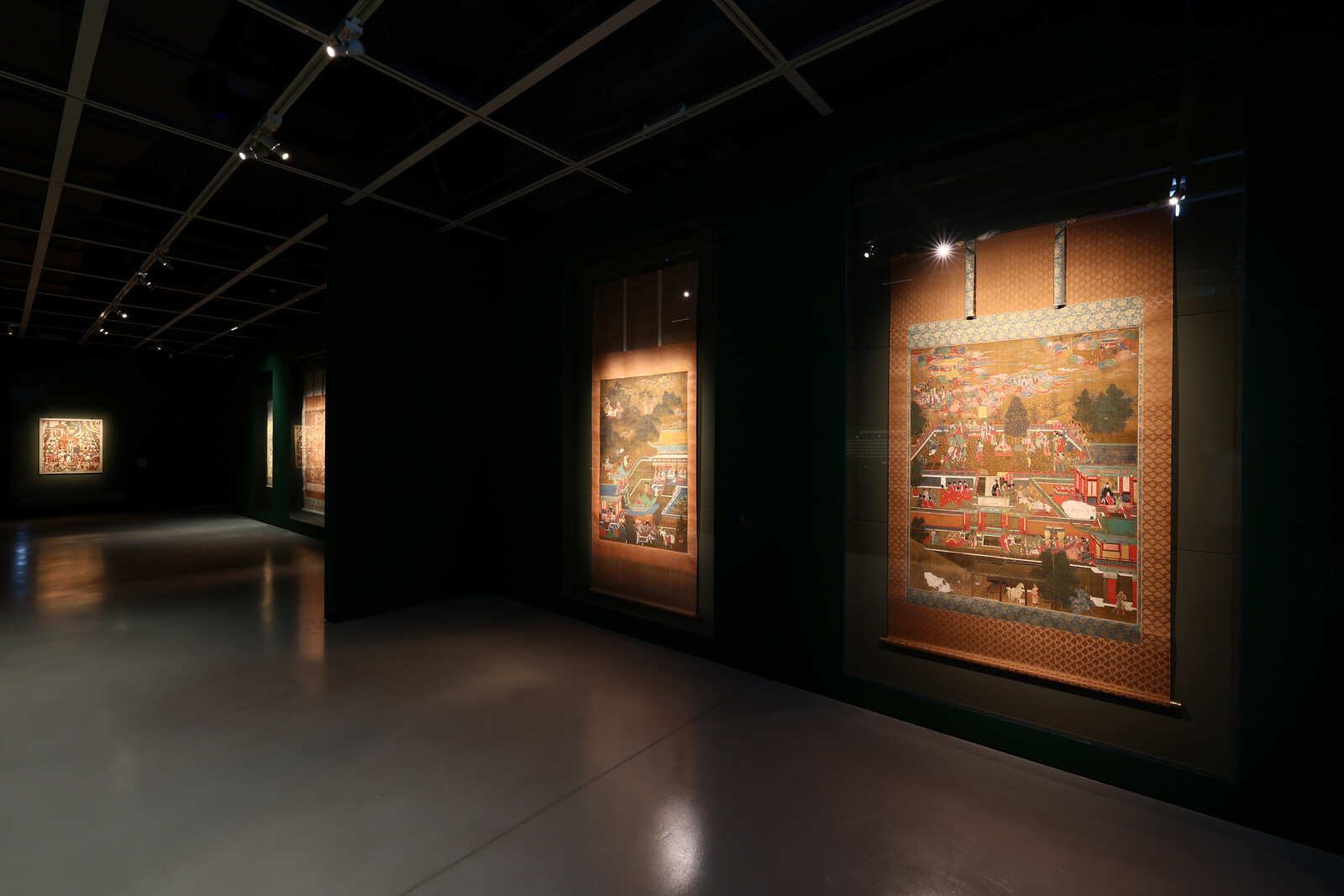March 27–June 16, 2024
38 Everland-ro, 562 beon-gil, Pogok-eup, Cheoin-gu
Hoam Museum of Art
17021 Yongin-si Gyeonggi-do
South Korea
T 82+31 320 1801
The Hoam Museum of Art presents Unsullied, Like a Lotus in Mud, a groundbreaking special exhibition that newly considers the venerated Buddhist art of Korea, China, and Japan through the lens of gender. From the first century CE, when Buddhism first arrived in East Asia, women have been among the most loyal and devoted members of the faith. In particular, through the centuries, women drove the advancement and innovation of Buddhist art not only as selfless patrons of masterful paintings and sculptures, but also as skilled artisans of textiles and embroideries. For the most part, however, these women have been omitted from existing histories of Buddhist art, to the extent that they have now been all but forgotten. Unsullied, Like a Lotus in Mud seeks to remedy this omission by shining a new light on the depictions, roles, contributions, and motivations of the forgotten women of Buddhist art. Showcasing 91 carefully selected pieces from 27 collections worldwide, this exhibition celebrates the hidden legacy of remarkable East Asian women who courageously struggled to shed the constraints of their patriarchal societies and realize their dreams as free individuals, like pure lotuses blooming from the mud.
From the birth of Buddhism in ancient India, the Buddhas and bodhisattvas have predominantly been represented as male or as beings who transcend gender. These male-dominated conceptions severely restricted the depictions of women in traditional Buddhist art, which is the subject of Part 1 of the exhibition, “Reemerging Images of Buddhist Women.” The first section, “Women’s Bodies: Motherhood and Impurity,” covers images of human women in Buddhist art, which have been largely limited to either mothers or women symbolizing sin and impurity. The next section, “Avalokiteshvara: Changing Bodies, Changing Genders,” focuses on Avalokiteshvara Bodhisattva, who was originally portrayed as a male, but gradually took on diverse feminine guises through the centuries. The third section, “World of Goddesses: From Divinity to Subjugation,” highlights female deities in Buddhist art, ranging from celestial beings such as devas, who could be represented as either male or female, to malevolent folk goddesses who were transformed into benign protectresses after being absorbed into the Buddhist pantheon.
Part 2, “Women’s Religious Vows and Practices,” presents an array of classic artworks and inscriptions that affirm the essential roles of women as both patrons and producers of Buddhist art. The first section, entitled “Devout Prayers: Attaining Enlightenment and Rebirth in the Pure Land,” features sutra transcriptions, votive inscriptions, paintings, and sculptures that reveal the deepest aspiration of every Buddhist woman: to attain enlightenment and be reborn in the Pure Land. The next section, “‘The Crowing of a Hen’: Buddhist Women in a Confucian Society,” focuses specifically on the Buddhist projects and commissions of royal women of Korea’s Joseon dynasty, who boldly practiced their faith in an era when Buddhism was actively suppressed by the government. Finally, the third section, “Women’s Work: Devotion in Every Stitch,” is dedicated to splendid Buddhist textiles and embroideries, neglected genres of Buddhist art that were created almost exclusively by women.
The exhibition is accompanied by a catalog that reads displayed Buddhist art objects through a lens of gender, with essays by Seunghye Lee, Eunkyung Park (Professor, Dong-A University), Ide Seinosuke (Professor, Kyushu University), Junghee Kim (Professor Emerita, Wonkwang University), Jeong Eunwoo (Director, Busan Museum), Lim Youngae (Professor, Dongguk University), Kitazawa Natsuki (Curator, Nara National Museum), and Yuhang Li (Associate Professor, University of Wisconsin-Madison). The catalog will be published in both English and Korean.
Unsullied, Like a Lotus in Mud is curated by Seunghye Lee (Curator, Leeum Museum of Art) and assisted by Jiyoon Jo (Head of Collections Department, Leeum Museum of Art) and Kwangbae Lee (Senior Curator, Leeum Museum of Art) with supports from various departments of the Museum.
Press inquiries: Miso Han, Communication Team, miso.han [at] samsung.com





